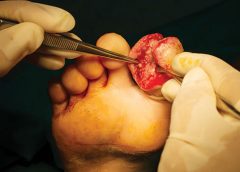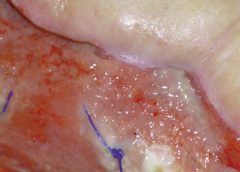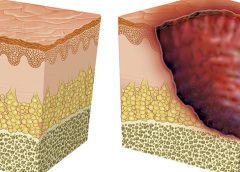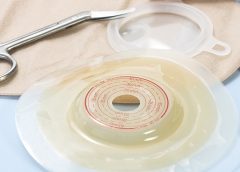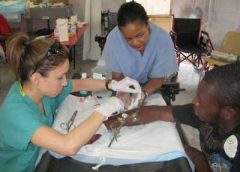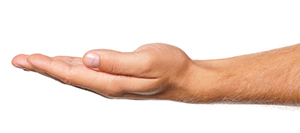Nurses and therapists often wonder if their license permits them to perform sharp wound debridement. Scope of practice varies significantly from state to state, so it’s imperative to check your state for specific guidance, but we can address some of the challenges clinicians face in deciding whether they can perform this valuable service for patients.
Search Results for: Me
Causes, prevention, and treatment of epibole
As full-thickness wounds heal, they begin to fill in from the bottom upward with granulation tissue. At the same time, wound edges contract and pull together, with movement of epithelial tissue toward the center of the wound (contraction). These epithelial cells, arising from either the wound margins or residual dermal epithelial appendages within the wound bed, begin to migrate in leapfrog or train fashion across the wound bed. Horizontal movement stops when cells meet (contact inhibition). The ideal wound edge is attached to and flush with the wound bed, moist and open with the epithelial rim thin, and pale pink to translucent. (more…)
Read MoreA pressure ulcer by any other name
Just when we think we’ve figured out pressure ulcer staging, it changes again. In April 2016, the National Pressure Ulcer Advisory Panel (NPUAP) held a consensus conference on staging definitions and terminology. The purpose: to analyze and discuss the rationale for the panel’s changes. One of the key changes is replacing the term “pressure ulcer” with “pressure injury.” So instead of calling it a pressure ulcer staging system, NPUAP will refer to it as a pressure injury staging system. The panel explained that the new terminology “more accurately describes pressure injuries to both intact and ulcerated skin.” Other changes include: (more…)
Read MoreQuiz Time 5/13/16
Which statement about hyperglycemia and mortality in patients receiving nutritional support is correct?
a. Compared to parenteral nutrition (PN), general nutrition (EN) increases hyperglycemia risk nearly twofold.
b. Compared to EN, PN increases hyperglycemia risk nearly twofold.
c. Patients whose blood glucose (BG) level stays above 220 mg/dL during PN therapy have an increased risk of death.
d. Patients whose blood glucose (BG) level stays above 220 mg/dL during PN therapy have a decreased risk of death.
Correct answer: b. Experts estimate that up to 30% of patients receiving EN and more than 50% of those receiving PN develop hyperglycemia, defined as a BG level above 200 mg/ dL. Compared to EN, PN increases hyperglycemia risk nearly twofold, even when caloric intake is similar. One study found inadequate glucose control both before and during nutrition therapy predicted a higher mortality risk.
Learn more by reading “Supplemental nutrition in hospitalized patients with diabetes“
Read MoreDisclaimer
Wound Care Advisor is owned and published by HealthCom Media. Wound Care Advisor is peer reviewed. The views and opinions expressed in the editorial and advertising material on this website are those of the authors and advertisers and do not necessarily reflect the opinions or recommendations of the NAWCO, the Editorial Advisory Board members, or the Publisher, Editors and staff of Wound Care Advisor.
Wound Care Advisor attempts to select authorities who are knowledgeable in their fields. However, it does not warrant the expertise of any author, nor is it responsible for any statements made by any author. Certain statements about the uses, dosages, efficacy and characteristics of some drugs mentioned here reflect the opinions or investigational experience of the authors. Nurses should not use any procedures, medications, or other courses of diagnosis or treatment discussed or suggested by authors without evaluating the patient’s conditions and possible contraindications or dangers in use, reviewing any applicable manufacturer’s prescribing or usage information, and comparing these with recommendations of other authorities.
We encourage people with wounds and ostomy questions to contact their care provider; we are unable to provide medical advice.
Read MoreCaution: Checklists may lead to inaccurate documentation
Using a checklist form to document wound care can make the task easier and faster—and help ensure that you’ve captured all pertinent data needed for assessment, reimbursement, and legal support. But the form itself may not be comprehensive; some important fields may be missing.
Recently, we at Wound Care Advisor received a question from a clinician who was having trouble deciding how to code a patient’s wound in her hospital’s electronic health record (EHR). Her patient’s specific wound and tissue types weren’t available options in the dropdown menu on the software system. Luckily, on investigating, we discovered her system provided the option to override the checklist and add comments in a notes section. (more…)
Read MoreClinical Notes: ostomy, pressure ulcer, burn treatment
Self-management ostomy program improves HRQOL
A five-session ostomy self-care program with a curriculum based on the Chronic Care Model can improve health-related quality of life (HRQOL), according to a study in Psycho-Oncology.
“A chronic care ostomy self-management program for cancer survivors” describes results from a longitudinal pilot study of 38 people. Participants reported sustained improvements in patient activation, self-efficacy, total HRQOL, and physical and social well-being. Most patients had a history of rectal cancer (60.5%) or bladder cancer (28.9%). (more…)
Read MoreMedications and wound healing
Each issue, Apple Bites brings you a tool you can apply in your daily practice. Here are examples of medications that can affect wound healing.
Assessment and care planning for wound healing should include a thorough review of the individual’s current medications to identify those that may affect healing outcomes. Clinicians must then weigh the risks and benefits of continuing or discontinuing the medications. In some cases, the risk of discontinuing the medication outweighs the importance of wound healing, so the goal of the care plan should be adjusted to “maintain a wound” instead of “healing.” (more…)
Read MoreTop 10 outpatient reimbursement questions
At the 2015 Wild on Wounds conference, the interactive workshop “Are You Ready for an Outpatient Reimbursement Challenge?” featured a lively discussion among participants about 25 real-life reimbursement scenarios. Here are the top 10 questions the attendees asked, with the answers I provided.
Q Why is it necessary for qualified healthcare professionals (QHPs) such as physicians, podiatrists, nurse practitioners, physician assistants, and clinical nurse specialists to identify the place of service where they provide wound care services and to correctly state the place of service on their claim forms? (more…)
Read MoreTime to select a support surface
By Donna Sardina, RN, MHA, WCC, CWCMS, DWC, OMS
Having the proper support surface for beds and wheelchairs is imperative in preventing pressure ulcers. “Pressure” ulcers are named that for a reason—pressure is the primary cause of interruption of blood flow to the tissue. Unfortunately, guidelines for support surface selection tend to make recommendations for the type of surface to use after a pressure ulcer has developed. Another factor that complicates matters is the development of deep-tissue injuries. These injuries start at the bone level, which means that often, tissue damage is extensive before we see visible signs and realize that the support surface we chose might not have been effective enough. (more…)
Read MoreIs your therapy department on board with your wound care team?
By Cheryl Robillard, PT, WCC, CLT, DWC
Patients in your clinical practice who develop wounds should prompt a call for “all hands on deck” to manage the situation, but some personnel may be missing the boat. Physical therapists (PTs), occupational therapists (OTs), and speech-language pathologists (SLPs) should be on board your wound care ship so patients can receive care they need. But unfortunately, sometimes they aren’t. (more…)
Read MoreClinician Resources: NPUAP, Pressure Ulcer Treatment, NIOSH
The resources below will help you address issues in your practice.
NPUAP position statement on hand check for bottoming out
Use of the hand check to determine “bottoming out” of support systems should be limited to static air overlay mattresses, according to a position statement from the National Pressure Ulcer Advisory Panel (NPUAP). (more…)
Read More
